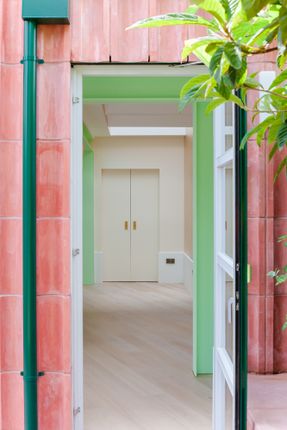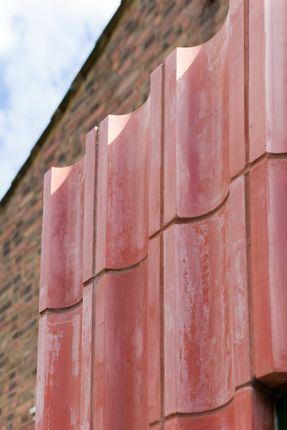Overcast House
ARCHITECTS
Office S&M
DESIGN TEAM
Hugh McEwen, Catrina Stewart, Beth Bird
MANUFACTURERS
Buster and Punch, Fired Earth, Inopera, Toto, Velfac, DIY Kitchens, Molts Lighting, Switch
PROJECT ARCHITECT
Hugh McEwen
CONCRETE BLOCKS
Mortise Concrete
FURNITURE BUILDER
Ylber Gashi, YG Builders Ltd
BUILDING CONTROL
Butler & Young
SITE ENGINEERING
Stephen Foster Foster Structures
MAIN CONTRACTOR
Ylber Gashi YG Builders Ltd
QUANTITY SURVEYOR
SJB Projects
PHOTOGRAPHS
Megan Taylor
AREA
114 m²
YEAR
2020
LOCATION
London, United Kingdom
CATEGORY
Houses, Extension
Overcast House is a single-storey rear extension to a Victorian house in north London, creating a flexible ground floor space that accommodates working-from-home while reconfiguring the house to make it a home for life.
The project name speaks of a central strategy to bring indirect light into space and references the ‘shadow catcher’ external skin – pigmented cast concrete blocks that model shadows on the rear façade even in the absence of direct sun.
The house owners – Keiko Cummings, a Japanese personal colour consultant and graphic designer, and her husband, Alan, an academic – appointed Office S&M to enlarge their ground floor kitchen and make it suitable for use as a consultation space.
The client’s passionate interest in colour and light made for a rewarding process of dialogue, experimentation and discovery for architect and client.
The project relocates Keiko’s studio space, which was formerly in the front of the house with a south-facing aspect. Changing sunlight and shadows made it hard to maintain colour consistency when she met her clients.
A primary requirement for the new space was constant, even light – conditions necessary for the owner to undertake colour analysis for her work. The brief for a well-lit space that would be shielded from direct sunlight was an unusual challenge.
The narrow house also needed to accommodate a table seating 10 people for consultations and a ground floor shower to futureproof the home.
The architects’ response has been to make use of north light in the new extension. Carefully shaped rooflights shield the windows from direct sun, while a flat rooflight deeper in plan is protected by the existing house.
These sawtooth rooflights are more commonly used in art galleries and old factories than homes, letting in even north light throughout the day, rather than direct sunlight which changes colour drastically.
The arrangement allowed the architects to carefully control the lighting conditions inside.
The extension is constructed in timber, which has a much lower embodied carbon than a brick or blockwork inner skin and creates the thinnest structure possible.It is clad in an external skin of bespoke pigmented scalloped concrete blocks developed by Office S&M with Mortise Concrete.
This creates a more modulated elevation than would be achieved with ubiquitous brick. A complementary green downpipe theatrically celebrates the exit of rainwater from the roof.
The route from the hall entrance to the consultation space was a key consideration.It has been designed so that the signs of everyday life (shower room, toilet and kitchen cupboards) can be concealed from view; when clients attend consultations, they enter a serene studio space.
The diagonal orientation of floor planks draws guests into the space, and the sharp angle of the toilet wall – a space saving strategy – echoes the angular shape of the rooflights in section.
Inside, gold leaf evens out and warms up the north light and incoming light, and it is combined with a palette of ‘trending’ colours.
Neo-Mint (Pantone colour of 2020) is used to soften the industrial quality of the steel beams, which now function as a display for a Victorian glassware collection; and colour blocking in tiles of Millennial Pink (Pantone colour of 2018) visually enlarges the small bathroom.
An exploratory colour selection has resulted in an effective workspace, expansive kitchen and a new convivial space for entertaining; all glowing with gentle shadowless light. The project was completed during the Covid-19 pandemic and has accommodated a variety of activities, including daily rituals like yoga, effectively demonstrating its adaptability.
























